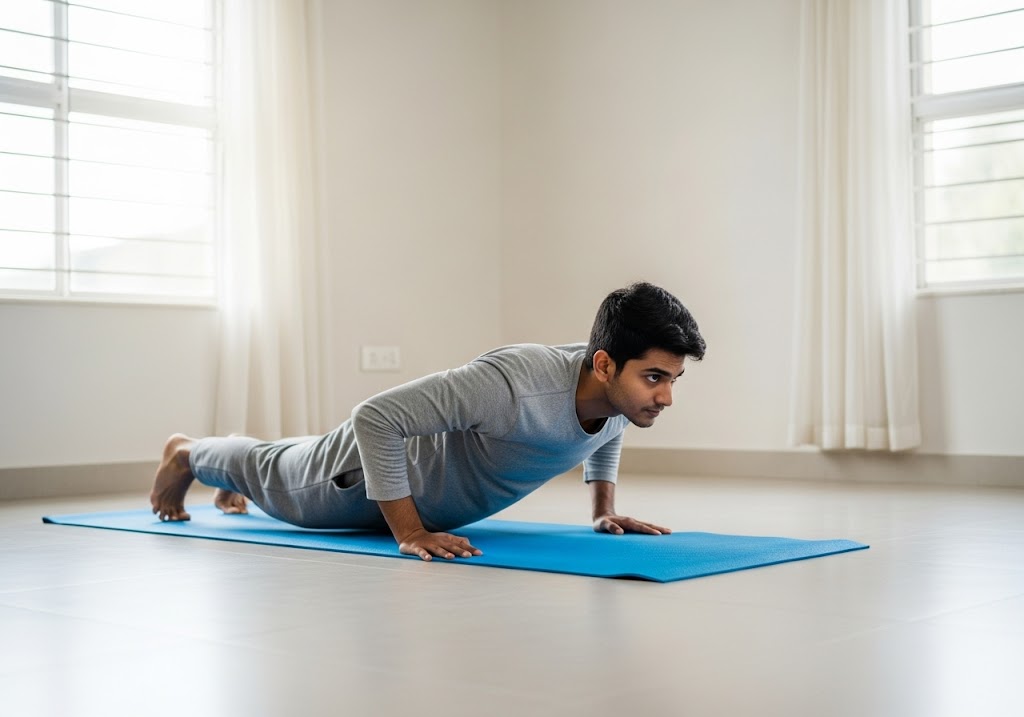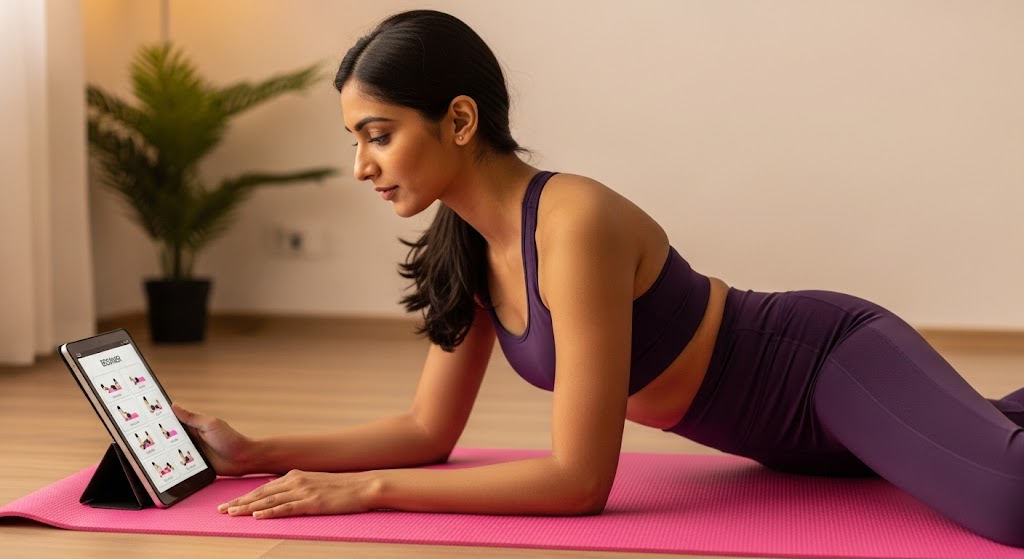The calisthenics planche is an impressive calisthenics skill where you hold your entire body parallel to the ground, supported only by your straight arms. It’s a challenging move that requires significant strength, balance, and body control.
Have you ever watched someone do a perfect planche and thought “I wish I could do that”? The calisthenics planche is one of the most impressive bodyweight moves you can learn. It looks like magic when someone holds their body parallel to the ground using only their hands. Anyone can learn this amazing skill with consistent practice. The calisthenics planche is not just about showing off. It’s a true test of strength, balance, and body control. When you master planche calisthenics, you develop incredible upper body power and core stability. This move requires no equipment and can be done anywhere. Learning takes time and patience, but every step makes you stronger and more confident.
Table of Contents
What is Calisthenics Planche?
The calisthenics planche is a bodyweight exercise where you hold your entire body parallel to the ground using only your hands for support. Your arms stay completely straight, and your body forms a straight line from head to toes. It looks like you’re floating in the air. In planche calisthenics, your shoulders, arms, and core work together to create this impossible-looking position. The move comes from gymnastics, but calisthenics athletes have made it popular worldwide. Unlike gymnastics, you don’t need special equipment – just your body and determination. The beauty of the calisthenics planche lies in its simplicity and complexity simultaneously. Simple because you need no equipment, complex because it requires incredible strength and perfect body control coordination.
Find out how many calories this explosive move can help you burn – calories burned in jump squats
How to Do the Calisthenics Planche?
The calisthenics planche is a horizontal bodyweight hold that requires years of dedicated training. Success comes through systematic progression, starting with basic holds and gradually advancing to the full position. Master each stage completely before progressing, focus on perfect form over duration, and prioritize consistency over intensity for long-term success.
Progression Timeline and Difficulty
| Progression Level | Target Hold Time | Estimated Training Period | Difficulty Rating |
| Frog Stand | 30+ seconds | 2-4 weeks | ⭐⭐ |
| Planche Lean | 30+ seconds | 4-8 weeks | ⭐⭐⭐ |
| Tuck Planche | 20+ seconds | 3-6 months | ⭐⭐⭐⭐ |
| Advanced Tuck | 15+ seconds | 6-12 months | ⭐⭐⭐⭐ |
| Straddle Planche | 10+ seconds | 12-24 months | ⭐⭐⭐⭐⭐ |
| Full Planche | 5+ seconds | 24+ months | ⭐⭐⭐⭐⭐ |
Learn how effective HIIT is for fat loss and how to use it strategically – will HIIT burn fat?
Step 1: Build Prerequisites
- Master 20+ perfect push-ups with full range of motion
- Hold a 60-second hollow body position on the ground
- Achieve 30-second L-sit hold on parallel bars or floor
- Develop 30+ seconds of wall-supported handstand
- Complete wrist conditioning exercises for 2-3 weeks
Step 2: Frog Stand
- Start in a deep squat with hands flat on ground
- Place knees on your upper arms/elbows
- Lean forward gradually until toes lift off ground
- Hold for 10-30 seconds, focus on balance and wrist strength
- Practice until you can hold 30+ seconds consistently
Step 3: Crow Pose to Planche Lean
- Progress from frog stand by straightening arms gradually
- Begin planche lean against wall: hands on ground, feet on wall
- Walk feet higher up wall over time to increase lean angle
- Hold 30+ seconds at each angle before progressing steeper
Step 4: Tuck Planche
- From crow pose, begin tucking knees toward chest
- Lift knees off arms and hold tucked position
- Keep arms straight, shoulders over hands
- Build up to 20+ second holds before advancing
Step 5: Advanced Tuck Planche
- Gradually bring knees closer to chest
- Maintain straight arms and protracted shoulders
- Focus on keeping hips level with shoulders
- Hold 15+ seconds consistently
Step 6: Straddle Planche
- Slowly extend legs out to sides from tuck position
- Keep legs bent initially, then gradually straighten
- Maintain level body position throughout
- Build to 10+ second holds
Step 7: Full Planche
- Bring legs together from straddle position
- Extend legs completely straight behind you
- Keep entire body parallel to ground
- Maintain protracted shoulders and neutral head position
Explore the truth behind HIIT’s impact on muscle growth – can HIIT build muscle?
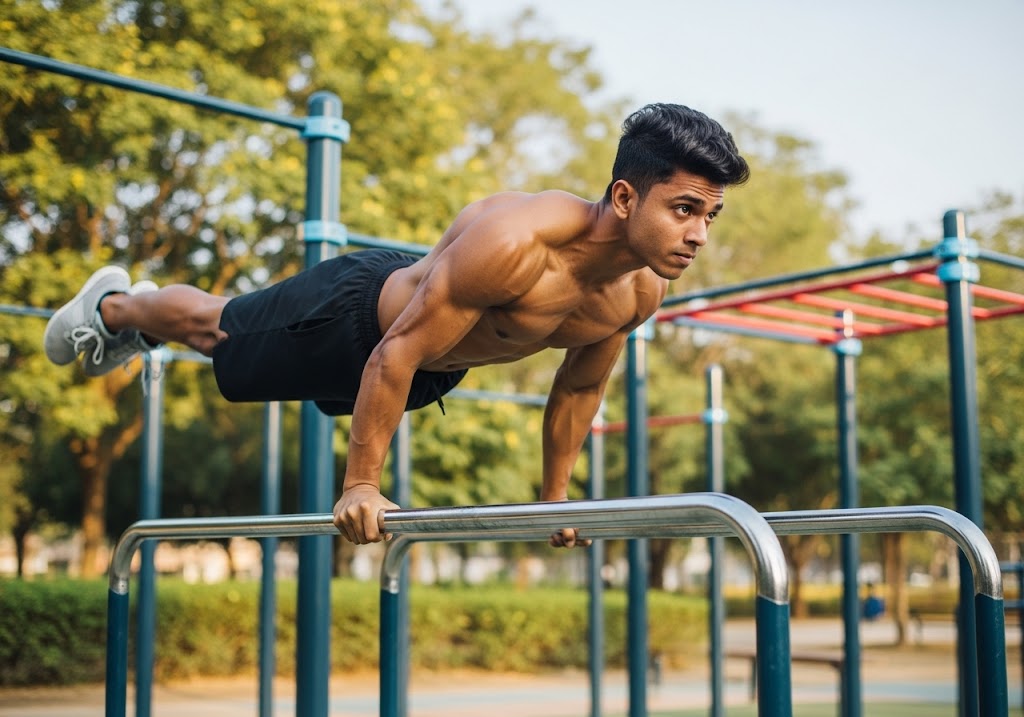
Calisthenics Planche Fundamentals
Understanding the basic principles of calisthenics planche helps you train more effectively and avoid common mistakes. The planche is fundamentally about straight-arm strength and body positioning. Your shoulders must be strong enough to support your entire body weight while maintaining perfect alignment from head to toes.
- Straight-Arm Strength: The foundation of all planche calisthenics training
- Body Alignment: Maintaining perfect straight line from head to toes
- Shoulder Positioning: Shoulders must be directly over or slightly ahead of hands
- Core Engagement: Constant tension to prevent sagging or piking
- Progressive Overload: Gradually increasing difficulty over time
Discover which upper-body move builds strength more efficiently – push ups vs bench press
Calisthenics Planche Calories Burned
Planche training creates significant metabolic demand through high-intensity isometric holds and supporting exercises. The combination of strength training, skill work, and conditioning burns substantial calories while building lean muscle mass. Understanding energy expenditure helps optimize training structure and nutritional planning for body composition and performance goals.
| Training Component | Duration | Intensity Level | Calories/Hour (70kg person) | Primary Energy System |
|---|---|---|---|---|
| Planche Holds | 2-10 seconds | Maximum | 400-500 | Phosphocreatine |
| Progression Practice | 20-30 minutes | High | 350-450 | Mixed anaerobic/aerobic |
| Support Exercises | 15-20 minutes | Moderate-High | 300-400 | Glycolytic |
| Conditioning Circuit | 10-15 minutes | High | 500-600 | Anaerobic glycolysis |
| Mobility/Warm-up | 10-15 minutes | Low-Moderate | 150-200 | Aerobic |
| Complete Session | 60-90 minutes | Variable | 400-500 average | Mixed systems |
| EPOC Effect | 2-24 hours post | Low | 50-100 additional | Fat oxidation |
| Weekly Training | 3-4 sessions | High | 1200-2000 total | Progressive overload |
| Strength Adaptations | Long-term | N/A | +50-100 daily BMR | Increased lean mass |
| Skill Practice | 15-30 minutes | Moderate | 250-350 | Neuromuscular efficiency |
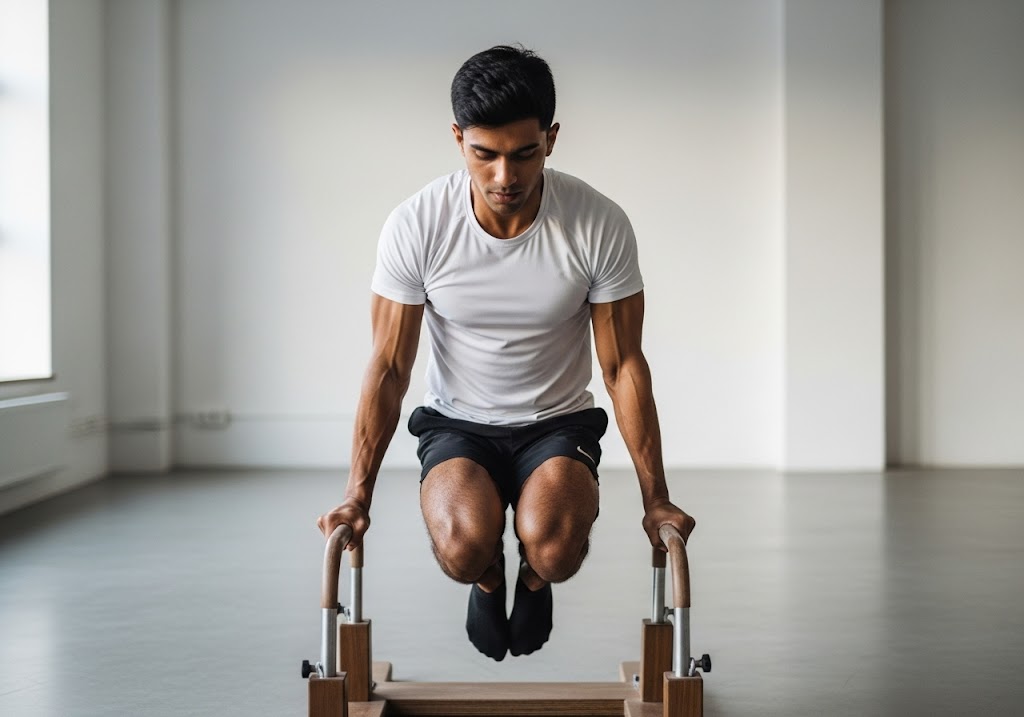
Why Is the Calisthenics Planche So Difficult?
The calisthenics planche is considered one of the hardest bodyweight moves because it requires exceptional strength in an unnatural position. Your shoulders must support your entire body weight while your arms stay completely straight. This combination creates intense demands on multiple muscle groups simultaneously.
- Biomechanical Disadvantage The planche places your body in an extremely disadvantageous lever position. Your entire body weight must be supported by your arms while horizontal, creating massive torque forces. Unlike a push-up where your feet share the load, every pound of body weight creates exponential resistance the further it extends from your hands.
- Extreme Strength Requirements The movement demands exceptional strength in muscles that aren’t typically trained to such intensity. Your anterior deltoids, serratus anterior, and triceps must work at near-maximal capacity just to maintain the position. Most people lack the baseline strength needed even for beginner progressions.
- Uncommon Movement Pattern Daily life rarely requires you to support your body weight horizontally with straight arms. This unfamiliar movement pattern means you’re starting from zero in terms of specific strength and motor learning, unlike more natural movements like pulling or squatting.
- Wrist Vulnerability The intense pressure and angle placed on your wrists can cause pain and limit progress. Your wrists must adapt to supporting forces they’ve never experienced, often becoming the limiting factor before your muscles reach failure.
- Precise Balance Requirements Finding the exact balance point requires incredible proprioception and micro-adjustments. Too far forward and you face-plant; too far back and you lose the position entirely. This balance component adds a skill element on top of the raw strength demands.
- Long Adaptation Timeline Unlike some skills that show quick progress, planche development typically takes years of consistent training. The slow progression can be mentally challenging and requires extraordinary patience and dedication.
Torch calories with HIIT: how many calories does 45 minutes of HIIT burn
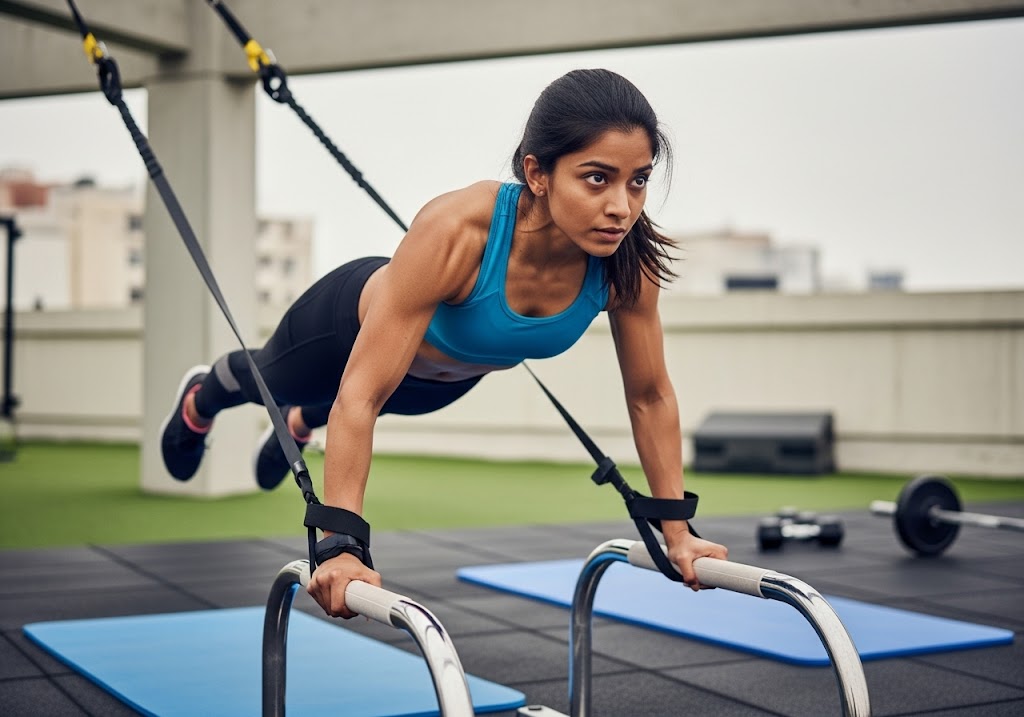
What Body Proportions Make the Calisthenics Planche Difficult, or Easy?
Body proportions significantly affect how difficult the calisthenics planche will be for you. Taller people with longer limbs face more challenges because their body acts as a longer lever. Shorter individuals often find planche calisthenics easier due to better leverage and lower center of gravity.
| Body Factor | Easier for Planche | Harder for Planche |
| Height | Shorter stature | Taller stature |
| Arm Length | Shorter arms | Longer arms |
| Leg Length | Shorter legs | Longer legs |
| Torso Length | Longer torso | Shorter torso |
| Body Weight | Lower body weight | Higher body weight |
| Muscle Distribution | Upper body heavy | Lower body heavy |
Explore the real impact in does reformer Pilates burn calories and see how it stacks up as a fat-burning workout.
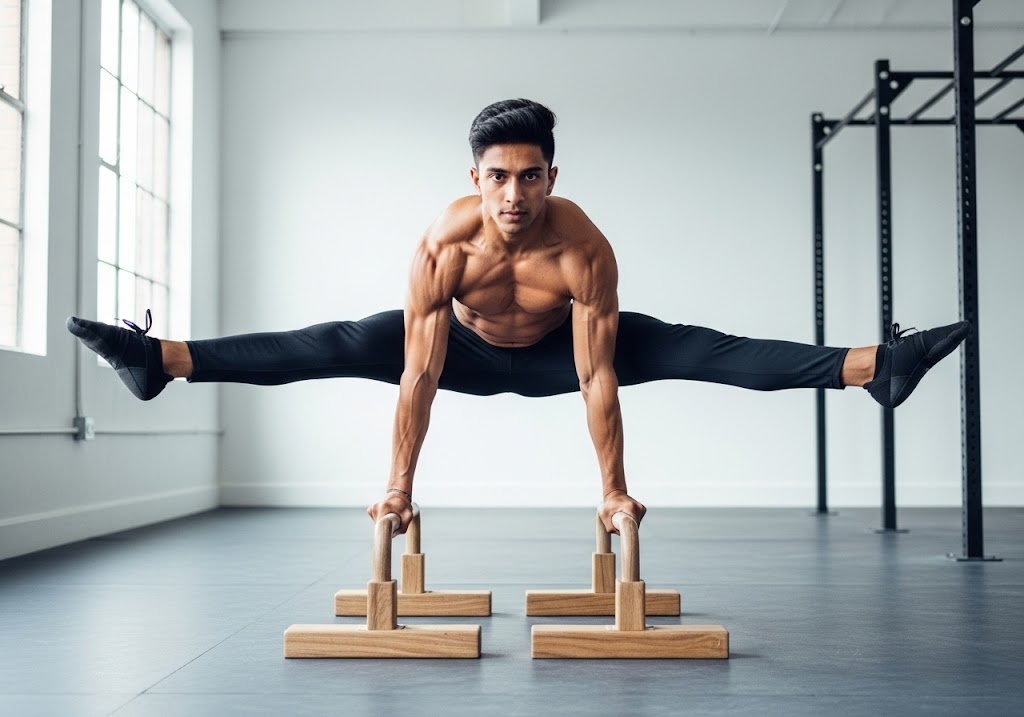
Calisthenics Planche Benefits
Training for the calisthenics planche gives you benefits that go far beyond just learning a cool move. Your upper body strength increases dramatically, especially in shoulders, chest, and arms. The core strength becomes incredibly powerful through planche calisthenics training. Mental benefits build confidence and teach goal achievement.
- Upper Body Strength: Develops powerful shoulders, chest, and triceps
- Core Stability: Builds incredible abs and lower back strength
- Mental Confidence: Teaches you can achieve difficult goals with practice
- Body Control: Improves balance and coordination in all activities
- Functional Strength: Helps with other calisthenics moves and daily tasks
- Wrist and Forearm Strength: Builds exceptional wrist stability and forearm power through progressive conditioning
- Flexibility and Mobility: Improves shoulder, wrist, and thoracic spine mobility required for proper positioning
- Progressive Mindset: Teaches patience and systematic progression through challenging long-term goals
- Injury Prevention: Strengthens stabilizing muscles and connective tissues often neglected in regular training
- Minimal Equipment: Can be practiced anywhere with just your body weight – no gym or equipment required
- Proprioception: Enhances body awareness and spatial orientation through complex movement patterns
- Bone Density: Weight-bearing nature stimulates bone strength and density improvements
- Discipline Development: Builds consistency and dedication through daily practice requirements
- Community Connection: Access to supportive calisthenics communities and training partners
- Cost-Effective: Lifetime skill with no ongoing equipment or membership costs
- Transferable Skills: Strength and control directly improve other advanced calisthenics movements
- Postural Improvements: Strengthens postural muscles and counters effects of desk work and daily activities
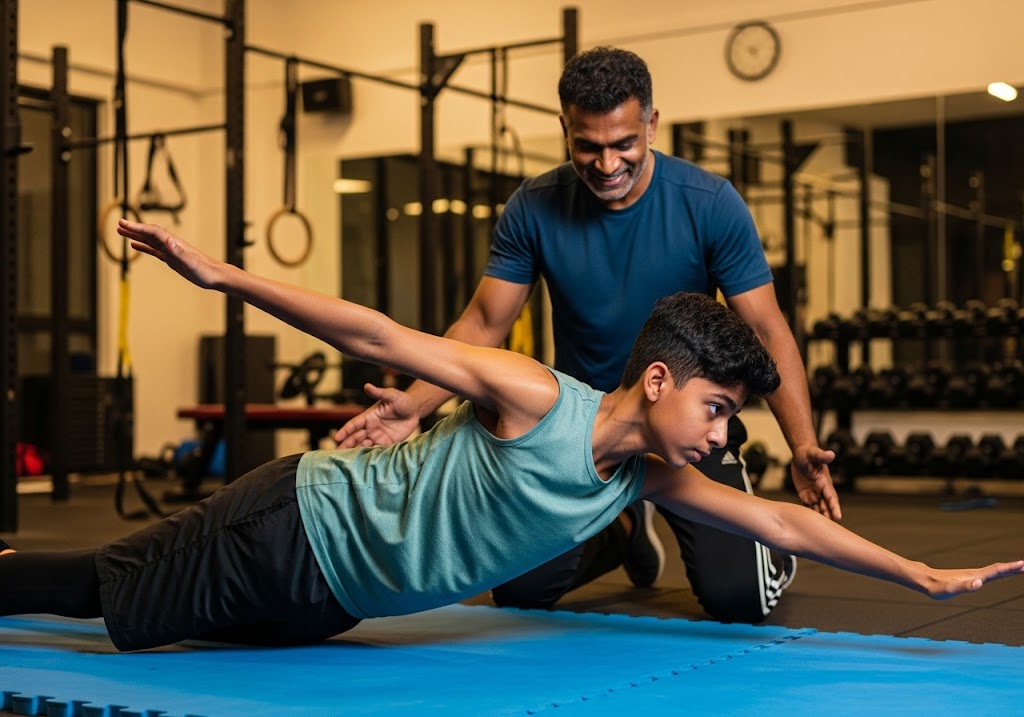
Calisthenics Planche: Muscles Worked in Training
The calisthenics planche works almost every muscle in your body, but some muscles work harder than others. Your shoulders do the most work, especially front deltoids and shoulder blade muscles. These muscles must be incredibly strong to hold your body weight in this horizontal position.
| Muscle Group | Primary Muscles | Function in Planche |
| Shoulders | Front deltoids, serratus anterior | Main support and stability |
| Chest | Lower chest, pectorals | Push body up and maintain position |
| Arms | Triceps, forearms | Keep arms straight under load |
| Core | Abs, lower back, hip flexors | Maintain straight body line |
| Legs | Quadriceps, glutes, calves | Body alignment and stability |
How We Approach the Calisthenics Planche?
Our approach to learning the calisthenics planche focuses on building solid foundations before attempting advanced positions. We believe in progressive overload through systematic skill development rather than rushing to impressive moves. Every planche calisthenics session should include proper warm-up, skill practice, and strength building exercises. We emphasize perfect form over holding duration because good habits formed early prevent injuries and accelerate progress. Our method combines traditional progressions with modern understanding of biomechanics and recovery science. We also stress the importance of patience and consistency, as the calisthenics planche rewards those who respect the process and build strength methodically over time.
Discover how many push ups to burn 100 calories and how to get the most out of each set.
Calisthenics Planche Prerequisites: Are You Ready to Start Planche Training?
Before beginning calisthenics planche training, assess your current fitness level honestly. You need solid foundation strength and basic body awareness. Testing these prerequisites helps determine if you’re ready for serious planche calisthenics training or need more preparation time.
- Push-up Test: Can you perform 25+ perfect push-ups without stopping?
- Plank Test: Can you hold a perfect plank position for 90+ seconds?
- Handstand Practice: Do you have experience with handstands or L-sits?
- Wrist Health: Are your wrists flexible and pain-free during weight bearing?
- Shoulder Mobility: Can you reach overhead without back arching?

Calisthenics Planche: Step-by-Step Progressions
Learning the calisthenics planche requires following a step-by-step progression. Each level builds the specific strength and skills needed for the next level. Rushing through these progressions often leads to injury or frustration, so take your time with each step and focus on perfect form.
- Planche Lean: Start in push-up position with hands slightly forward. Slowly lean forward, putting more weight on hands. Hold for 10-30 seconds. This teaches basic planche position and builds foundation strength.
- Tuck Planche: Lift feet off ground and tuck knees to chest. Body should be parallel to ground with knees tucked. Start with 5-10 second holds and gradually increase time.
- Advanced Tuck Planche: Straighten legs slightly while keeping knees bent. This bridges the gap between tuck planche and more advanced variations. Focus on maintaining perfect form.
- Straddle Planche: Straighten legs completely with wide spread. The wide leg position makes this easier than full planche while still requiring significant strength for planche calisthenics.
- Full Planche: The final goal – holding body completely horizontal with legs together and straight. This requires months or years of consistent training but represents complete mastery.
Calisthenics Planche Training: Progressions and Form
Planche progression requires systematic strength building through increasingly difficult variations. Each progression targets specific muscle groups while developing the neuromuscular coordination needed for the full skill. Proper form is crucial to prevent injury and ensure effective strength development throughout the progression pathway.
| Progression Level | Exercise | Key Form Cues | Hold Duration | Sets x Reps | Strength Focus |
|---|---|---|---|---|---|
| Beginner | Planche Lean | Forward lean, straight arms, protracted shoulders | 10-30 seconds | 3-5 x holds | Wrist/shoulder conditioning |
| Beginner | Frog Stand | Knees on elbows, hollow body position | 10-30 seconds | 3-5 x holds | Core stability, balance |
| Novice | Tuck Planche | Knees to chest, rounded back, weight forward | 5-15 seconds | 3-5 x holds | Hip flexor strength |
| Novice | Advanced Tuck | Higher hips, more forward lean | 10-20 seconds | 3-5 x holds | Increased loading |
| Intermediate | Straddle Planche | Legs wide apart, parallel to ground | 5-10 seconds | 3-5 x holds | Lateral stability |
| Intermediate | Half Lay Planche | One leg extended, one tucked | 3-8 seconds | 3-5 x each side | Unilateral strength |
| Advanced | Full Planche | Both legs straight, body parallel | 2-10+ seconds | 3-5 x holds | Complete integration |
| Elite | Planche Push-ups | Dynamic planche with push-up motion | 1-5 reps | 3-5 x sets | Dynamic strength |
| Support Work | Planche Push-up Negatives | Controlled descent from planche | 3-5 seconds down | 3-5 x reps | Eccentric strength |
| Support Work | Pseudo Planche Push-ups | Hands by hips, forward lean | 8-15 reps | 3-4 x sets | Strength endurance |
Build strength, size, and endurance with these resistance band workouts for men – perfect for home or travel.
Calisthenics Planche: Uncommon Strategies
Beyond traditional progressions, these advanced strategies can accelerate your planche calisthenics development. Many athletes overlook these techniques, but they can provide breakthrough progress when standard methods plateau. These methods require experience with basic progressions before attempting.
| Strategy | Method | Benefit |
| Negative Training | Lower slowly from advanced position | Builds eccentric strength |
| Weighted Progressions | Add weight to easier variations | Increases strength faster |
| Assistance Bands | Use bands for support during holds | Practice proper form |
| Finger Positioning | Adjust hand placement and finger spread | Improves leverage |
| Breathing Techniques | Controlled breathing during holds | Increases endurance |
| Micro-Progressions | Tiny position changes between levels | Smoother advancement |
Calisthenics Planche Advanced Exploration
Advanced planche training explores creative variations, training methodologies, and integration with other skills. These techniques push the boundaries of the basic planche, developing superior strength, coordination, and movement flow. Advanced exploration requires mastery of fundamental progressions and exceptional body awareness for safe execution.
| Advanced Technique | Description | Prerequisites | Training Focus | Difficulty Level |
|---|---|---|---|---|
| Planche to Handstand | Transition from planche to handstand | Full planche 10+ sec, solid handstand | Dynamic transitions | Expert |
| Planche Variations | Wide grip, close grip, rings planche | Full planche mastery | Grip strength, stability | Advanced |
| One-Arm Planche | Single arm support planche | Full planche 30+ sec | Unilateral strength | Master |
| Planche Slides | Sliding forward/backward in planche | Full planche 15+ sec | Core control | Expert |
| Iron Cross to Planche | Rings transition between positions | Both skills independently | Ring strength | Master |
| Planche Maltese | Arms perpendicular to body | Full planche, advanced ring work | Extreme shoulder strength | Elite |
| Dynamic Planche | Bouncing/oscillating movements | Rock-solid static hold | Reactive strength | Advanced |
| Planche Clapping | Explosive push from planche | Planche push-ups | Power development | Expert |
| Weighted Planche | Added resistance via vest/chains | Bodyweight planche mastery | Strength progression | Advanced |
| Flow Integration | Combining with other calisthenics | Multiple skill mastery | Movement creativity | Variable |
Calisthenics Planche: Common Mistakes in Training
One of the biggest mistakes in planche calisthenics is trying to progress too quickly. Many people want to skip foundation work and jump to advanced progressions. This approach usually leads to injury or frustration when you can’t maintain proper form throughout your training journey.
- Rushing Progressions: Skipping foundation work and jumping to advanced levels too quickly
- Poor Warm-up: Neglecting proper wrist and shoulder preparation before training
- Bad Form: Allowing hips to pike up or head to drop down during holds
- Overtraining: Training every day without proper rest and recovery periods
- Ego Training: Focusing on hold duration instead of perfect form and technique
- Neglecting Prerequisites: Attempting planche work without mastering basic push-ups, L-sits, and hollow body holds
- Ignoring Antagonist Training: Failing to balance planche work with pulling exercises, leading to shoulder imbalances
- Inadequate Wrist Conditioning: Not spending enough time building wrist strength and flexibility before intense training
- Training Through Pain: Pushing through joint pain instead of addressing underlying mobility or strength issues
- Inconsistent Practice: Training sporadically instead of maintaining regular, consistent sessions
- Comparing Progress: Getting discouraged by comparing your timeline to others instead of focusing on personal improvement
- Static-Only Training: Only practicing holds without incorporating dynamic movements and strength-building exercises
- Poor Self-Assessment: Not recording yourself or getting feedback to identify form breakdowns
- Flexibility Neglect: Ignoring shoulder and thoracic spine mobility work essential for proper planche positioning
Find out how many burpees to burn 1000 calories and what it really takes to hit that burn.
Calisthenics Planche Training Program: Workout Routine
A good planche calisthenics program balances strength training, skill practice, and recovery. Train your planche progressions 3-4 times per week, giving your body at least one day of rest between sessions. Your muscles grow stronger during rest periods, not during training sessions.
| Training Element | Frequency | Duration | Focus |
| Planche Practice | 3-4x per week | 20-30 minutes | Current progression level |
| Warm-up | Every session | 5-10 minutes | Wrists, shoulders, core |
| Supplementary Exercises | 2-3x per week | 15-20 minutes | Push-ups, planks, handstands |
| Rest Days | 3-4x per week | Full day | Recovery and muscle growth |
| Progress Tracking | Daily | 5 minutes | Record hold times and feelings |
Calisthenics Planche: Helpful Tools
Having the right tools can make your calisthenics planche training more effective and comfortable. While the planche requires no equipment, certain tools can help with progression, form, and injury prevention. These tools are optional but can significantly improve your training experience.
| Tool | Purpose | Benefits |
| Parallettes | Wrist comfort and grip | Reduces wrist stress, better grip |
| Resistance Bands | Assistance and resistance | Helps with form, adds challenge |
| Yoga Mat | Cushioned surface | Comfort and grip during training |
| Timer/App | Progress tracking | Accurate hold time measurement |
| Mirror | Form checking | Visual feedback for positioning |
| Foam Roller | Recovery | Muscle recovery and flexibility |
Calisthenics Planche: Safety Tips
Safety should always be your top priority when training for the calisthenics planche. Always warm up thoroughly before training and cool down afterward. Your wrists take the most stress during planche training, so pay special attention to wrist mobility and strength exercises for injury prevention.
- Proper Warm-up: Always spend 10+ minutes warming up wrists, shoulders, and core
- Listen to Your Body: Stop immediately if you feel sharp pain or joint discomfort
- Gradual Progress: Move through progressions slowly, don’t rush to advanced levels
- Rest Days: Take at least one full day off between planche training sessions
- Professional Help: Consider working with a qualified trainer if experiencing pain or form issues
- Safe Training Surface: Practice on non-slip mats or appropriate flooring to prevent hand slipping
- Wrist Protection: Use parallettes, push-up handles, or wrist wraps if experiencing wrist discomfort
- Form Over Force: Prioritize perfect technique in easier progressions rather than forcing harder variations
- Session Time Limits: Keep planche-specific training sessions under 30-45 minutes to prevent overuse
- Prerequisite Strength: Master basic movements like push-ups, L-sits, and handstands before attempting planche progressions
- Spotting Awareness: Have someone nearby when attempting new progressions to prevent face-first falls
- Recovery Practices: Incorporate stretching, massage, and mobility work between training sessions
- Balanced Training: Don’t neglect pulling exercises to maintain shoulder health and muscular balance
- Environmental Factors: Avoid training when overly fatigued, stressed, or in poor environmental conditions
Learn how many calories you can burn doing crunches – and how to make each rep more effective.
Calisthenics Planche Recovery Strategies
Planche training places intense demands on joints, tendons, and nervous system, making recovery the limiting factor for progress. Proper recovery protocols prevent overuse injuries, reduce inflammation, and optimize adaptation between sessions. Smart recovery strategies can accelerate skill acquisition while maintaining long-term joint health and training sustainability.
| Recovery Method | Application | Benefits | Timing | Duration |
|---|---|---|---|---|
| Active Recovery | Light mobility work, walking | Promotes blood flow, reduces stiffness | Off days between sessions | 20-30 minutes |
| Wrist Mobility | Circles, flexor/extensor stretches | Prevents wrist impingement, maintains ROM | Before/after every session | 5-10 minutes |
| Shoulder Decompression | Hanging, band pull-aparts | Relieves anterior shoulder stress | Daily | 2-3 minutes |
| Massage Therapy | Deep tissue, trigger point release | Reduces muscle tension, improves circulation | Weekly | 60-90 minutes |
| Cold Therapy | Ice baths, cold showers | Reduces inflammation, accelerates recovery | Post-workout | 10-15 minutes |
| Sleep Optimization | 7-9 hours quality sleep | Enhances protein synthesis, nervous system recovery | Nightly | 7-9 hours |
| Contrast Showers | Hot/cold alternating | Improves circulation, reduces soreness | Post-workout | 3-5 cycles |
| Meditation/Breathing | Stress reduction techniques | Lowers cortisol, improves recovery quality | Daily | 10-20 minutes |
| Nutrition Timing | Post-workout protein/carbs | Optimizes muscle protein synthesis | Within 2 hours post-workout | Varies |
| Deload Weeks | Reduced volume/intensity | Prevents overreaching, consolidates gains | Every 4-6 weeks | 7 days |
Calisthenics Planche Nutrition Tips for Training
Planche training demands optimal nutrition to support intense strength work, joint recovery, and skill acquisition. Proper nutrient timing and composition enhance performance, reduce inflammation, and accelerate adaptation. Strategic nutrition planning becomes crucial for managing energy levels during high-intensity training while supporting lean muscle development and maintaining healthy body composition.
Pre-Training Nutrition (1-2 hours before)
- Complex carbohydrates – Oats, quinoa, or sweet potato for sustained energy release
- Lean protein – 20-30g from chicken, fish, or plant sources for muscle preparation
- Moderate fats – Nuts, avocado, or olive oil for hormone production and satiety
- Hydration – 16-20oz water to ensure optimal muscle function and joint lubrication
- Avoid – High fiber, excessive fats, or large meals that may cause digestive stress
During Training Hydration
- Electrolyte balance – Add sea salt or electrolyte powder to water for intensive sessions
- Small sips – 4-6oz every 15-20 minutes to maintain hydration without bloating
- Temperature preference – Room temperature water for better absorption rates
- Monitor output – Pale yellow urine indicates proper hydration status
Post-Training Recovery (within 30-60 minutes)
- Protein priority – 25-40g high-quality protein for muscle protein synthesis
- Carbohydrate replenishment – 30-60g fast-digesting carbs to restore muscle glycogen
- Anti-inflammatory foods – Tart cherry juice, turmeric, or berries to reduce exercise-induced inflammation
- Creatine supplementation – 3-5g daily to support power output and recovery
- Timing matters – Earlier consumption maximizes recovery window benefits
Daily Nutritional Strategy
- Protein distribution – 1.6-2.2g per kg bodyweight spread across 4-5 meals
- Carbohydrate cycling – Higher carbs on training days, moderate on rest days
- Healthy fats – 25-30% of total calories from omega-3 rich sources
- Micronutrient density – Emphasize colorful vegetables and fruits for vitamin/mineral support
- Meal timing – Consistent eating schedule to optimize hormonal rhythms
Supplements for Enhanced Performance
- Magnesium – 400-600mg daily for muscle function and nervous system support
- Vitamin D3 – 2000-4000 IU for bone health and muscle strength
- Beta-alanine – 3-5g daily to improve muscular endurance during longer holds
- Collagen peptides – 10-15g daily for joint health and connective tissue support
- Quality sleep aids – Melatonin or glycine if sleep quality is compromised
Foods to Emphasize
- Anti-inflammatory proteins – Wild salmon, grass-fed beef, organic eggs
- Nutrient-dense carbs – Quinoa, steel-cut oats, sweet potatoes, berries
- Recovery boosters – Tart cherry juice, bone broth, leafy greens
- Joint supporters – Fatty fish, walnuts, flaxseeds, turmeric with black pepper
- Hydrating foods – Watermelon, cucumber, coconut water, herbal teas
Foods to Limit During Intensive Training
- Processed sugars – Can cause energy crashes and increase inflammation
- Trans fats – Impair recovery and increase oxidative stress
- Excessive alcohol – Disrupts sleep quality and protein synthesis
- High sodium processed foods – Can cause bloating and affect performance
- Artificial additives – May trigger inflammation in sensitive individuals
Conclusion
The calisthenics planche is one of the most rewarding bodyweight skills you can learn. It requires dedication and patience, but the benefits make training worthwhile. Focus on perfect form rather than rushing through progressions. Start your planche calisthenics journey today with basic progressions. With consistent effort, you’ll achieve this amazing skill. Whether you’re focusing on calisthenics biceps exercises or full-body routines, your body is the only equipment you need to achieve remarkable fitness results.
Want to master the calisthenics handstand and take your skills to the next level? Whether you’re a beginner or pushing advanced skills, ISC – Indian School of Calisthenics offers expert guidance to help you master bodyweight training. Visit us at SRPF Ground, NH8, Goregaon (E), Mumbai – 400065. For class schedules, personalized coaching, or more details, call +91 77159 53218. Train smart, move better, and unlock your back strength with ISC.
Calisthenics Planche – FAQs
How long does it take to learn the calisthenics planche?
Most people need 6 months to 2 years to achieve a full planche, depending on starting strength, training consistency, and genetics. Focus on gradual progression rather than timeline.
Can beginners start planche calisthenics training immediately?
Beginners should first build basic strength with 20+ push-ups and 60-second planks. Start with planche leans and foundation exercises before advancing to tuck planche.
What muscles does the calisthenics planche work most?
The planche primarily works shoulders, chest, triceps, and core muscles. Your front deltoids and serratus anterior muscles do the most work during planche holds.
How often should I train planche calisthenics?
Train planche 3-4 times per week with rest days between sessions. Your muscles need recovery time to grow stronger and adapt to training stress.
Is the calisthenics planche harder than a handstand?
The planche is generally considered harder than handstand because it requires more strength and less balance. Handstands rely more on balance and technique skills.
Can I learn planche calisthenics without any equipment?
Yes, the planche requires no equipment – just your body and floor space. Some people use parallettes for wrist comfort, but they’re not necessary.
What’s the easiest planche progression for beginners?
The planche lean is the easiest progression. Start in push-up position and lean forward, shifting weight to your hands while keeping feet on ground.
Should I stretch before planche calisthenics training?
Yes, warm up with light stretching and mobility work, especially for wrists and shoulders. Save deeper stretching for after training when muscles are warm.
Why do my wrists hurt during planche training?
Wrist pain usually means inadequate preparation or too much training volume. Strengthen your wrists gradually and consider using parallettes for comfort during training.
Can I do planche calisthenics if I’m overweight?
Being overweight makes planche training more challenging but not impossible. Focus on building strength with basic progressions while working on overall fitness and weight management.
